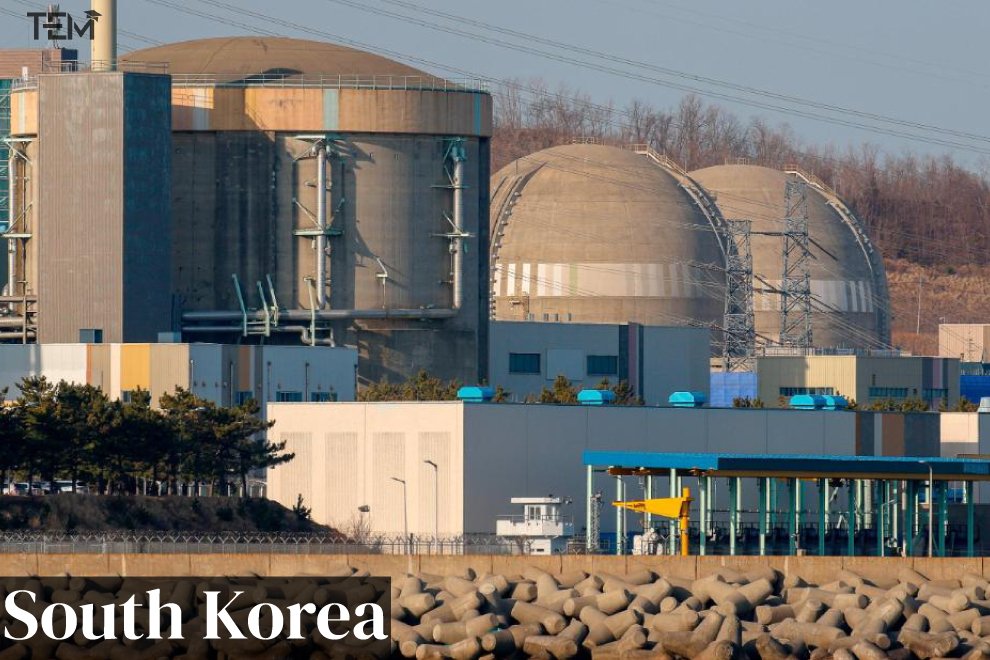Countries with nuclear energy play a crucial role in shaping the global energy landscape, utilizing advanced technologies and resources to meet their energy demands. As we enter 2023, it becomes essential to identify the leading nations that have harnessed the power of nuclear energy to drive their economies and provide sustainable power solutions. These countries have demonstrated their commitment to diversifying their energy portfolios and reducing reliance on fossil fuels, showcasing their innovative approaches and pioneering spirit. This blog will explore the top 10 nuclear energy-producing countries, examining their strategies, achievements, and contributions to revolutionizing the world’s energy sector.
1. USA

- Total reactors: 93 Reactors
- Power Capacity: 94.7 GW
The United States is leading the pack in the number of nuclear energy-producing countries claiming the coveted number-one position. The country’s impressive capacity enables it to meet 20% of its electricity demand. Since 2016, the US has increasingly turned to coal and gas as primary sources for power generation. The construction of two additional reactors is underway in the state of Georgia.
2. France

- Total reactors: 56 Reactors
- Power Capacity: 61.3 GW
Astoundingly, France relies on nuclear sources for two-thirds of its electricity needs. With their expertise and cost-effective practices, they have successfully harnessed approximately 17% of their electricity from recycled nuclear fuel. France is about to construct additional reactors in the coming years to decarbonize its power generation by the year 2050.
3. China

- Total reactors: 53 Reactors
- Power Capacity: 55.6 GW
Emerging as a global powerhouse among nuclear energy-producing countries, China boasts a remarkable nuclear energy landscape. Moreover, despite being in the construction phase, China is looking ahead to constructing an additional 39 nuclear reactors, combining their capacities to deliver an extraordinary gross capacity of 43 GW.
4. Japan

- Total reactors: 17 Reactors
- Power Capacity: 33 GW
Japan ranks fourth on this list of nuclear energy-producing countries, boasting a remarkable fleet in the number of reactors and the energy which is being produced. Furthermore, Japan is actively constructing two more nuclear reactors, Ohma 1 and Shimane 3, which, upon completion, will augment the net capacity by an additional 2.6 GW.
5. Russia

- Total reactors: 38 Reactors
- Power Capacity: 29.5 GW
With a rich history in nuclear technology, Russia emerges as a prominent player. Russia harnesses the power of atomic energy to generate a staggering 195.5 TWh, constituting a significant 19.7% of the overall electricity produced. Additionally, the ongoing Kursk II project sets to contribute further to Russia’s energy landscape, with the construction of two reactors boasting a net capacity of 2.3 GW.
6. South Korea

- Total reactors: 25 Reactors
- Power Capacity: 24.5 GW
South Korea, one of the prominent nuclear energy-producing countries, is harnessing the energy potential of 24 nuclear reactors. It supports its position as a prominent player in the energy sector, accounting for an impressive 26% of the country’s total electricity generation, illustrating the significant contribution of nuclear energy to the nation’s power supply.
7. Canada

- Total reactors: 19 Reactors
- Power Capacity: 13.6 GW
Canada is distinguished by their utilization of Canadian Deuterium-Uranium (CANDU) reactors, all the power plants in Canada employ advanced pressurized heavy water reactors. The advanced reactors rely on uranium as their fuel source while utilizing water as a coolant and moderator, exemplifying Canada’s innovative approach to nuclear technology.
8. Ukraine

- Total reactors: 15 Reactors
- Power Capacity: 13 GW
Ukraine is currently constructing two additional reactors, Khmelnytskyi 3 and 4, which will employ heavy water technology and contribute an impressive 2 GW of net capacity. In a proactive move to reduce reliance on Russian nuclear fuel and services amidst ongoing geopolitical instability, Ukraine has turned to the renowned US-based Westinghouse for fuel procurement.
9. UK

- Total reactors: 13
- Power Capacity: 8.9 GW
Ranked at number nine on the list of nuclear energy-producing countries, the United Kingdom boasts an impressive portfolio. The UK is currently embarking on an ambitious endeavor with the commencement of construction on two novel nuclear reactors known as Hinkley Point C1 and Hinkley Point C2. Anticipated to become operational by June 2027, these reactors will cater to the energy demands of approximately 6 million households.
10. Spain

- Total reactors: 7 Reactors
- Power Capacity: 7.1 GW
Spain, with its capacity for nuclear power generation, derives 22% of its electricity from this clean and efficient energy source. The renewed licenses of six out of the seven reactors in 2020 and 2021, ensure their continued operation well beyond 2035. However, it is essential to note that around half of Spain’s existing nuclear power reactors are set to retire by 2035.
We hope this blog on nuclear energy-producing countries has provided valuable insights into the global landscape of nuclear power. By highlighting the top countries in this field, we aimed to shed light on nuclear energy’s pivotal role in meeting the world’s growing demand. As we continue to navigate the complexities of energy generation and sustainable development, staying updated about the advancements and challenges in nuclear energy is important. We anticipate you will be in touch with our content as we offer informative and interesting information on various topics.
ALSO READ: 10 Unheard Facts about Ocean Pollution that will make you think










